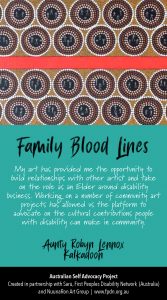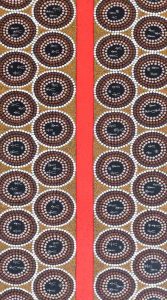 In our community we don’t necessarily see advocacy as empowering an individual, or group; as we feel that we as people living with a disability are already powerful. We have developed the skills to navigate a world designed for the able bodied, and a culture that does not always reflect our worldviews and social structures and beliefs.
In our community we don’t necessarily see advocacy as empowering an individual, or group; as we feel that we as people living with a disability are already powerful. We have developed the skills to navigate a world designed for the able bodied, and a culture that does not always reflect our worldviews and social structures and beliefs.
We prefer to look at self-advocacy as supporting an individual or a group to utilise the inner strength and power they already possess, to start the conversations around the issues, barriers and community attitudes they confront and navigate every day, but more importantly not to complain but to contribute, educate and offer solutions.
Self-advocacy is not always about an individual, self-advocacy can relate to minority groups within minority groups speaking up and giving themselves a collective voice
 Within the Aboriginal and Torres Strait Islander community, individuals living with disability can be represented across many language groups. For some of us, our language is not a written language, or history has been passed down via storytelling and art. This is what connects us all regardless of language.
Within the Aboriginal and Torres Strait Islander community, individuals living with disability can be represented across many language groups. For some of us, our language is not a written language, or history has been passed down via storytelling and art. This is what connects us all regardless of language.
Being part of an art group for artists living with a disability has enabled us to have a common voice and tell our stories of strength and resilience using the symbols and styles that have been part of our culture for thousands of years.
“People with an Intellectual Disability and ABI are often isolated within the community, for many there is a loss of their Aboriginality.
Self Advocacy provides a real opportunity for us to re-engage with our culture. Self advocacy groups in many ways can support re-connection and learning and that is such a strong and powerful message.”
